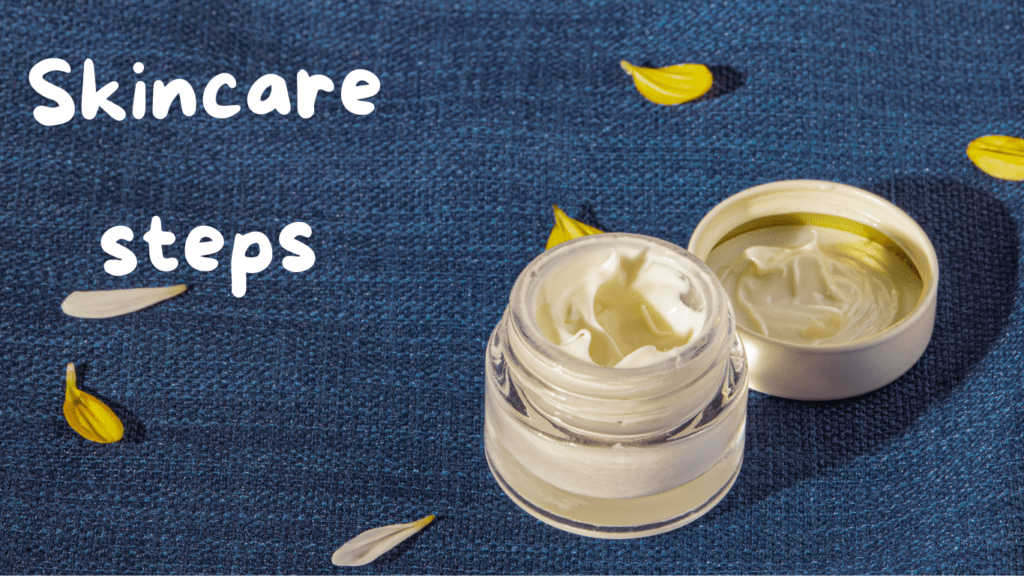Understanding Skin Types and Their Needs
Knowing your skin type is essential for an effective moisturizing routine. Let’s explore how to determine your skin type and customize your moisturizing approach.
Determining Your Skin Type
Identify your skin type by observing your skin’s behavior after cleansing. Typically, there are five skin types:
- Normal Skin: Balanced, doesn’t feel too oily or dry, has small pores.
- Oily Skin: Shiny, feels greasy, large pores, prone to acne.
- Dry Skin: Feels tight, flaky, rough texture.
- Combination Skin: Oily T-zone (forehead, nose, chin) and dry/normal cheeks.
- Sensitive Skin: Redness, irritation, reacts to products.
Use a reliable cleanser, let your skin rest for an hour, then check its appearance and feel for accurate determination.
Customizing Moisturizing for Different Skin Types
Tailor your routine based on your skin type to maximize benefits.
- Normal Skin: Light, non-greasy moisturizers maintain balance. Look for products with hyaluronic acid.
- Oily Skin: Oil-free, non-comedogenic moisturizers prevent clogged pores. Gel-based products work well.
- Dry Skin: Rich, creamy moisturizers restore moisture. Ingredients like shea butter and ceramides help.
- Combination Skin: Use different products for different areas or a balanced formula that hydrates without excess oil.
- Sensitive Skin: Hypoallergenic, fragrance-free moisturizers reduce irritation. Ingredients like aloe vera and chamomile soothe.
Adapting your moisturizing routine to your skin type ensures healthier, more resilient skin. Select products designed for your specific skin concerns to achieve the best results.
A Step-by-Step Guide to Moisturizing for Men

Consistent moisturizing can yield impressive results for men’s skin. Here’s how to ensure you’re moisturizing effectively.
When and How Often to Moisturize
Moisturize at least twice daily, once in the morning and once before bed. Morning application protects against environmental stressors, while nighttime moisturization aids in skin repair during sleep. Adjust frequency based on your skin’s needs. For dry skin, consider adding midday application.
Application Techniques for Maximum Benefits
Start with a clean face. Use a gentle cleanser suitable for your skin type to remove dirt and oil. Warm a small amount of moisturizer between your fingers to activate ingredients.
\Apply using upward strokes, starting from the neck up to the forehead. Be gentle around the eye area. Massage the moisturizer in until fully absorbed for better penetration and effectiveness.
Choosing the Right Moisturizer
Finding the right moisturizer is crucial for achieving healthy, resilient skin. Select products catering to your skin type for optimal results.
Ingredients to Look For
Carefully examine ingredient labels to choose the best moisturizer. Key ingredients offer specific benefits:
- Hyaluronic Acid: Hydrates deeply, ideal for dry skin.
- Glycerin: Attracts moisture, excellent for all skin types.
- Niacinamide: Reduces oil production, best for oily skin.
- Ceramides: Strengthen skin barrier, suitable for sensitive skin.
- Aloe Vera: Soothes irritation, perfect for combination skin.
Product Recommendations for Different Skin Types
Select products tailored to your specific skin type for maximum effectiveness.
- Normal Skin: Lightweight gels and lotions. Example: Neutrogena Hydro Boost Water Gel.
- Oily Skin: Oil-free or mattifying products. Example: La Roche-Posay Effaclar Mat.
- Dry Skin: Rich, creamy formulas. Example: CeraVe Moisturizing Cream.
- Combination Skin: Balancing moisturizers. Example: Clinique Moisture Surge 72-Hour Auto-Replenishing Hydrator.
- Sensitive Skin: Hypoallergenic and fragrance-free options. Example: Vanicream Moisturizing Cream.
Choosing the right moisturizer ensures your skin stays hydrated and healthy, adapting to its unique needs.
Common Moisturizing Mistakes Men Make
Men often overlook proper moisturizing techniques, which can lead to ineffective skincare. Understanding these common mistakes helps improve routine.
Over-Moisturizing
Using too much moisturizer can clog pores, leading to breakouts. Applying a thick layer often causes skin to become greasy, especially for oily skin types. It’s best to use a pea-sized amount for the face.
More product doesn’t mean better results. Instead, stick to a minimal but effective amount to ensure skin absorbs it properly.
Ignoring SPF in Moisturizers
Skipping SPF leaves skin vulnerable to UV damage, causing premature aging and increasing the risk of skin cancer. Some moisturizers include SPF, offering sun protection while hydrating.
I recommend using a moisturizer with at least SPF 30. Ensure you’re covered on both hydration and protection fronts.


 Bradley Frankirly is a distinguished article writer at Body Care And Matter, bringing a unique perspective to the world of health and wellness journalism. With a keen eye for detail and a passion for storytelling, Bradley crafts articles that resonate deeply with readers, offering both informative content and a relatable narrative.
Bradley Frankirly is a distinguished article writer at Body Care And Matter, bringing a unique perspective to the world of health and wellness journalism. With a keen eye for detail and a passion for storytelling, Bradley crafts articles that resonate deeply with readers, offering both informative content and a relatable narrative.

